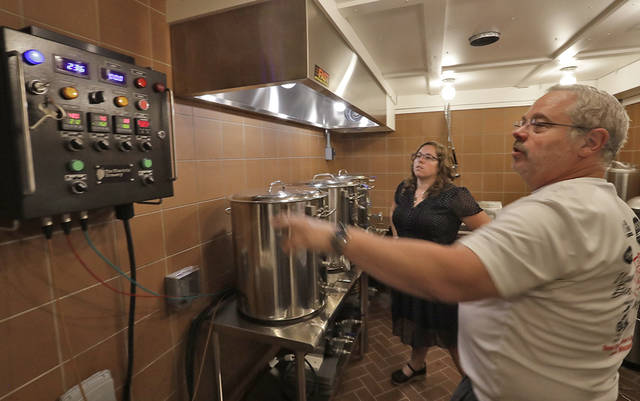The first time a batch of beer boiled over in his kitchen, Steve Clemens started thinking about creating a dedicated brewing space somewhere else in his home.
“That pretty much solidified it,” said Clemens, of Lodi, Wisconsin, who is one of an estimated 1.2 million homebrewers in the United States. “I also wanted someplace to brew indoors in the wintertime.”
Designating a space for brewing solves a number of issues for homebrewers, said Gary Glass, director of the American Homebrewers Association, in Boulder, Colorado. It eliminates the need to take down and set up equipment for every batch. And it often leads to moving the process inside, allowing for year-round brewing. A dedicated brewing space also makes it easier for friends to join you in preparing or sampling the beer, he said.
“Beer is a social beverage. Having a space to bring your friends in to share the experience — that’s a major incentive,” Glass said.
Dedicated brew spaces are a popular topic on the association’s website, Glass said. “People are constantly posting pictures of things that they’ve built,” he said. “If you’re a homebrewer, to some degree you’re a do-it-yourselfer.”
On the online photo-sharing forum Pinterest, the number of users saving “brew room” ideas jumped 200 percent during the first six months of this year, according to a Pinterest spokeswoman, Lara Levin.
A home brewery doesn’t require a lot of space, but should include a water source, ventilation, drainage and a heat source, Glass said.
Water is needed for the beer and also for cleaning the equipment. “A big part of brewing is spent cleaning,” Glass said. “Everything has to be clean.”
A hood or source of ventilation is necessary to remove the water vapor that forms during the boiling stages of beer-making. A floor drain is helpful for spills and general cleanup.
And for many brewers, creating a brew room means moving from a propane setup — commonly used outdoors or in garages — to an electric one, Glass said. It’s not safe to brew indoors with propane. In recent years, a growing number of companies have begun to manufacture electric brewing systems for indoor use, he said. Many entail little engineering to set up, but they often require a higher voltage socket, similar to a clothes dryer.
“The movement from gas to electric has been the biggest game changer” in the industry, said Kal Wallner, an electrical engineer who designed a system that he sells online at www.theelectricbrewery.com . With an electric system, “you can brew indoors in your flip-flops,” he said, an important consideration for the brewer from Ottawa, Canada.
A dedicated space makes brewing more convenient, said Wallner. “Everything is at your fingertips. I know what is where,” he said. “I find I’m a lot more interested in using it when I don’t have to tear down and set up.”






